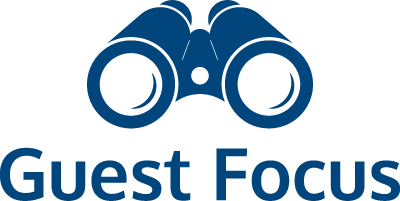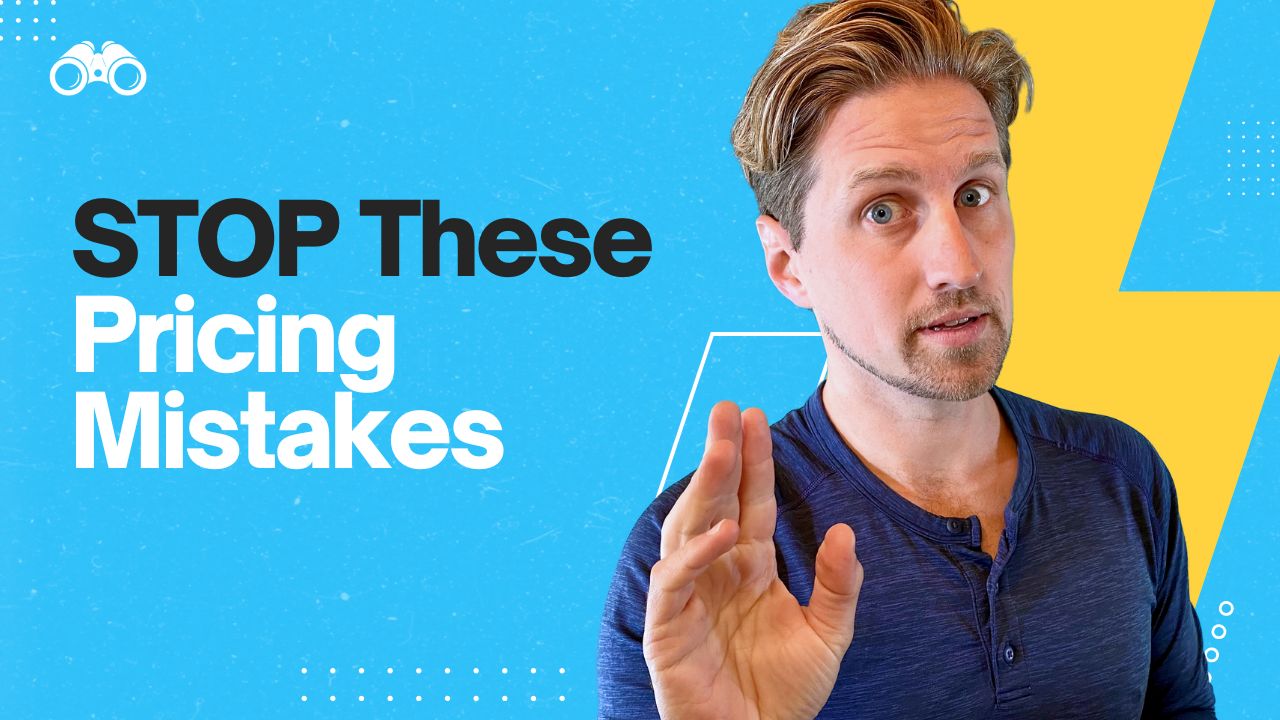8 Costly Pricing Mistakes That Are Draining Your Tour Business Profits
This is part 2 of our Pricing Series. You can watch the whole series here, or start with part 1 here.
One adventure tour company we worked with increased their annual revenue by 22% simply by implementing three basic pricing tiers, without any increase in operating costs. This dramatic improvement came from correcting just one of the eight common pricing mistakes we regularly see tour operators make.
These pricing errors can silently drain your profits day after day, month after month, and year after year. Let’s examine each one to ensure you’re not leaving money on the table.
Mistake #1: Copying Competitor Pricing
This is the most common approach tour operators take when setting prices. A quick Google search to see what others charge often becomes the ceiling or benchmark for your own pricing. But this approach is dangerous for one big reason: you don’t know what’s happening behind the scenes with your competitors.
You have no visibility into their fixed or operating costs, whether they own or lease vehicles and equipment, if they have investors or financial backing, what they pay their guides and staff, or—most importantly—if they’re actually profitable.
While competitor pricing is certainly a factor to consider, remember that just because a price exists in the marketplace doesn’t mean it’s profitable. After working with countless operators, we know how tight margins can be for small and medium-sized tour businesses. Many struggle to pay themselves a livable wage or maintain healthy profit margins.
Mistake #2: Not Paying Yourself First
This mistake hits home for many smaller tour business owners, especially in their first few years. The typical pattern is: pay vendors, pay guides, pay all bills, and take whatever scraps remain at the end.
The reality is that if you don’t build your own compensation into pricing from day one, you’ll end up creating a business that works for everyone except you. People will happily buy tours, activities, and experiences priced at a loss, but your business needs to work for you as the owner.
A helpful approach is to mentally remove yourself from the business. If you had to hire for all the roles you currently fill, what would that cost? For example, if you lead tours, separate your role as a guide from your role as business owner. Pay yourself a reasonable guide rate for tours you lead, plus a management fee or marketing salary for your other contributions.
Mistake #3: Failing to Build in Distribution Margins
Many operators set pricing based solely on direct sales, failing to account for commission costs when working with resellers like online travel agents, hotel concierges, wholesalers, and other partners. This oversight becomes painfully apparent when exploring new distribution channels.
You’ll find countless online comments from operators lamenting that they simply can’t afford to pay 25-30% commissions. In most cases, this means they haven’t priced their tours properly from the start.
While you don’t have to work with OTAs or any particular distribution channel, it’s smart to build in flexibility and avoid becoming overly reliant on any single sales channel.
Typical commission rates for day tour operators:
- Online travel agents (Viator, GetYourGuide): 20-30%
- Hotel concierges: 10-20%
- Travel agents: 10-15%
- Tour wholesalers: 20-25%
- Destination marketing organizations: 10-15%
These rates vary geographically. Some operators in Cancun pay up to 50% commission to local agents, while hotel concierges in San Francisco might expect 25% compared to 10-12% in Vancouver.
Mistake #4: Failing to Track All Business Costs
Many tour operators track obvious expenses like guide fees, vendor fees, vehicle expenses, insurance, and supplier tickets. However, they overlook other operational costs that can pile up and deliver unwelcome surprises at year-end.
These overlooked expenses include:
- Booking software fees (1-6% per booking or flat fees)
- Credit card processing fees
- Customer service expenses
- Website maintenance
- Software subscriptions
- Equipment depreciation
- Administrative tasks
Particularly problematic are the tasks business owners handle themselves. Any admin, customer service, or other work taking you several hours weekly needs to be factored in. If you were removed from the business, someone would need to be hired to perform these functions.
Tracking these costs helps with initial pricing and identifies opportunities to cut costs later. For example, if you pay a 6% booking fee on $500,000 in direct sales ($30,000 annually), doubling your sales to $1 million means you’re now paying $60,000 for the same software—a significant cost increase that requires attention.
Mistake #5: Insufficient Profit Margins
Many tour operators believe they’re running profitable businesses, but once they account for all inputs (including appropriate compensation), they discover they’re operating at break-even, with minimal margins, or even at a loss.
Your profit margin should be separate from your take-home pay. This additional profit isn’t just nice to have—it’s essential for a thriving business. Without healthy margins, you can’t:
- Weather unexpected challenges like economic downturns
- Invest in new equipment or experiences
- Hire additional staff to scale beyond yourself
- Take time off without halting business income
- Build a business with selling value
The value of your business is typically your assets plus a 2-3x multiplier on annual profits—not your take-home pay. A sacred profit margin built into your pricing ensures business sustainability.
Mistake #6: Using Static Pricing
Static pricing means charging the same amount year-round regardless of conditions. Dynamic and variable pricing is standard in the tourism sector (think airlines and hotels), yet many tour operators hesitate to implement it.
Tour businesses should use structured variable pricing rather than complex dynamic pricing that changes in real-time based on guest numbers and booking trends.
Static pricing hurts profitability by:
- Leaving money on the table during high-demand periods
- Missing opportunities to attract price-sensitive customers during low-demand periods
- Failing to optimize capacity across your operating schedule
Even simple forms of variable pricing can significantly increase annual revenue:
- Seasonal pricing: Charge more in peak season, less in shoulder/off-seasons
- Day-of-week pricing: Higher rates on weekends, lower mid-week
- Time-of-day pricing: Premium rates for prime slots or sunset tours
Mistake #7: Not Knowing Your Break-Even Point
Your break-even point is when the total revenue from ticket sales covers all costs of running a tour. This differs from your trip minimum, which is the lowest number of guests needed for a tour to be worth running.
The trip minimum should be set above the break-even point to ensure sustainable profit. For example, if four guests allow you to break even, you might set a trip minimum of six to ensure reasonable profit per departure.
Setting a trip minimum too low leads to barely covering costs, while setting it too high might cause unnecessary cancellations.
Understanding these numbers allows you to:
- Set smart minimum group sizes
- Know when to cancel tours
- Adjust pricing strategically
There may be strategic reasons to occasionally run a trip at break-even or below your trip minimum, such as launching a new product or pursuing partnership opportunities. However, this should be the exception rather than the rule.
Mistake #8: Undervaluing Your Unique Experience
Many tour operators position themselves as comparable to competitors or focus too much on what others offer, instead of identifying and communicating the real-world, tangible value they provide to guests.
Ask yourself:
- What access do you provide that others don’t?
- What expertise do your guides bring that’s truly unique?
- What moments in your tour cannot be experienced elsewhere?
- Who are you uniquely positioned to serve?
The tour businesses commanding the highest prices aren’t necessarily those with the lowest costs or fanciest equipment. They’re the ones creating truly distinctive experiences and clearly communicating that value in their marketing materials.
Your pricing should reflect the true value of what you’re offering, not just the cost of providing it.
Recap: The 8 Costly Pricing Mistakes
- Copying competitor pricing
- Not paying yourself first
- Failing to build in distribution margins
- Failing to track all business costs
- Insufficient profit margins
- Using static pricing
- Not knowing your break-even point
- Undervaluing your unique experience
Being aware of these pitfalls is your first step toward pricing profitably. By addressing these common errors, you can create a tour business that works for you financially while delivering exceptional experiences to your guests.
Want help avoiding these pitfalls in your tour business? Book a free 45-minute strategy call with us today!




